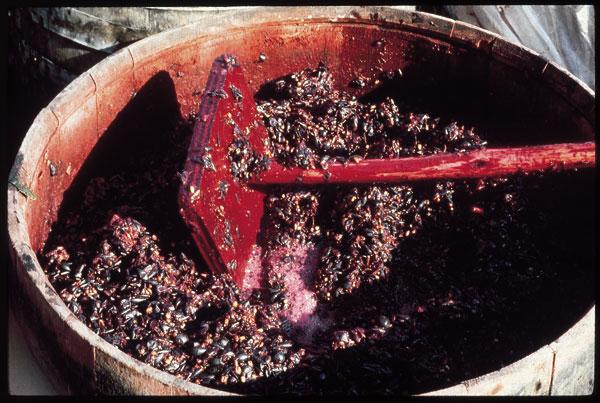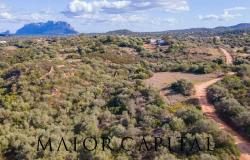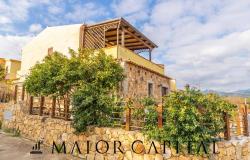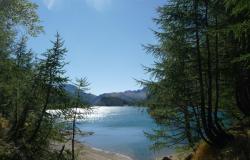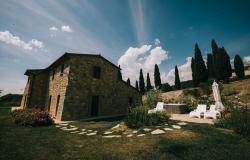For this article we explore the region walled by the Alps of France to the northwest, by the Alps of Switzerland to the north, and by the enormous bay of the Ligurian sea to the south. There are five regions of winemaking within this hilly area, producing 20% of Italy’s total wine, but 30% of its quality DOC and DOCG wine. ‘Small is beautiful’ where quality wine is concerned, and the Piemonte stands tallest of the regions in Italy.
The Valle D’Aosta
High in the Alps is the smallest region, abutting both France and Switzerland. Naturally rocky with steep valleys at high altitudes, very tiny quantities are made. Its wines are rarely drunk outside the area, but they are fresh, light and refreshing. The highest vineyards in Europe are found here up to 1,300 metres.
Liguria
Some 200km south is the other tiny region clinging to the rocky cliffs of the Mediterranean sea from the French Riviera to Tuscany. This crescent of land is based on Genoa, but its tiny production is hardly ever exported. If you find yourself in Genoa or La Spezia, ask for Cinque Terre dry white. It is clean, fruity and crisp and goes well with fresh grilled sea fish.
Lombardy
In the north, this largest region borders Switzerland and, in the south, the mighty River Po. It has no world-famous wines but produces great music in Milan, and fabulous scenery at the Lakes Como, Garda, Maggiore and Iseo. Whilst you are there, drink the red and white from Valtellina in the north or Oltrépo Pavese in the south. On Lake Garda, drink delicate Lugana white with freshwater fish from the lake.
Emilia-Romagna
We will stroll through this region alongside Tuscany, as more appropriate, when the next instalment of our journey through Italy’s wine regions is printed.
Piemonte (Piedmont)
The ‘Foothills of the Alps’. No winemaking region of Europe can compare with the range of top-quality wines produced here. From Vermouth of Turin to Spumante of Asti; from the great reds of Barbaresco, Barbera, Barolo, to those lighter reds of Dolcetto, Gattinara and Ghemme.
Piemonte has 42 different DOC/DOCG areas - the largest number of any Italian region. They make over 100-million gallons of wine each year in the most evolved and sophisticated region.
Its history of proximity to France and its openness to European enlightenment resulted in techniques of fermenting and ageing wines in stark contrast to the poverty and ignorance of the south.
Its geography of rolling hills at between 500-1,000 metres (especially the Langhe Hills) and its climate of mixed Subalpine and Mediterranean weather encourage well drained soils of varied composition. The south-facing slopes, protected at the rear by trees, produce well-ripened grapes over a long, slow period of growth. The evenings produce a regular chill which enhances the flavours and complexity.
The grapes:
Nebbiolo is Piedmonte’s noblest grape. Twelve of the 42 DOC/DOCG areas are based on this red grape. Barolo and Barbaresco are dependant on it for their character.
Barbera is the workhorse grape, grown virtually anywhere but especially around Asti, Alba and Alessandria. Originally rustic, robust and warming, it has received the same treatment as the Nebbiolo since the 1980s, and now luxury Cuvées of low- yielding concentrated wine are aged in new oak barriques.
Dolcetto is the region’s fruity red wine for young drinking, reminiscent of Beaujolais.
Moscato (Muscat) is the famous white grape of the region because it is used extensively for making Spumante and Frizzante, sparkling wines based on the town of
Asti (hence Asti Spumante!). Until 1980, white wine was an afterthought in Piemonte, but with the international success of Spumante and the introduction of Chardonnay, production of white wines has risen to 25% of the total sales.
The wines:
Piemonte has been the centre for discussion on the merits of barrel fermentation and barrel ageing for more than 50 years. Today, Barolo and Barbaresco come in two distinct styles - with or without oak - long or short ageing.
Barolo, considered the ‘wine of kings and the king of wines,’ was the ‘oak influenced’ wine which took decades to mature and was perfect with the game hunted locally by the noble families of the region - House of Savoy and House of Vittorio Emanuelle. Jealously guarded production by small farmers on steep hills with handpicked grapes is limited to five villages (including Barolo village itself) 15km from the town of Alba. To the small size of production, add the pressure for demand from the UK, USA, and the cosmopolitan life of the city of Turin, nearby, and prices shot up in the 1980s and 1990s.
Modernists appeared who used stainless-steel fermenters and less oak-aged wines which are approachable within two to three years. The grapes were best found on calcareous marls and the wine has had aromas of plums, dried roses, tar, liquorice and even the local white truffles! They have plum flavours backed with tannins, dense texture and real alcoholic warmth - 151⁄2% natural alcoholic strength is not unusual in the best vintages. The grapes on the sandstone rocky hills were best at making wines which aged in oak for long periods. Prices began to increase in both styles by the 1980s.
There were 1,107 growers of Barolo in 1990, owning 1,164 hectares of vines (only just over 1ha per owner!). Consequently the rush to buy certain vineyards’ tiny production created price increases. Traditionalists look for Bussia, Rocche, Ginestra, La Morra and Canubi, but beware, you may be shocked by £100-plus for a bottle of a good vintage from the 1960s/1970s/1980s.
Modernists looking for fruity soft styles try Ceretto, Renato Rattis, Paolo Cordero. You will be looking at £15-£25 per bottle. Angelo Gaja is the modernist winemaker of Barbaresco, following New World techniques for ripe, rich, soft wine. Naturally his prices too are high.
If you like wines with big flavours, then make your way to Piemonte, tramp those hills and enjoy the gourmet life of the area. This is one of Italy’s great wine and food regions.
Ciao! See you in northeast Italy next time...
